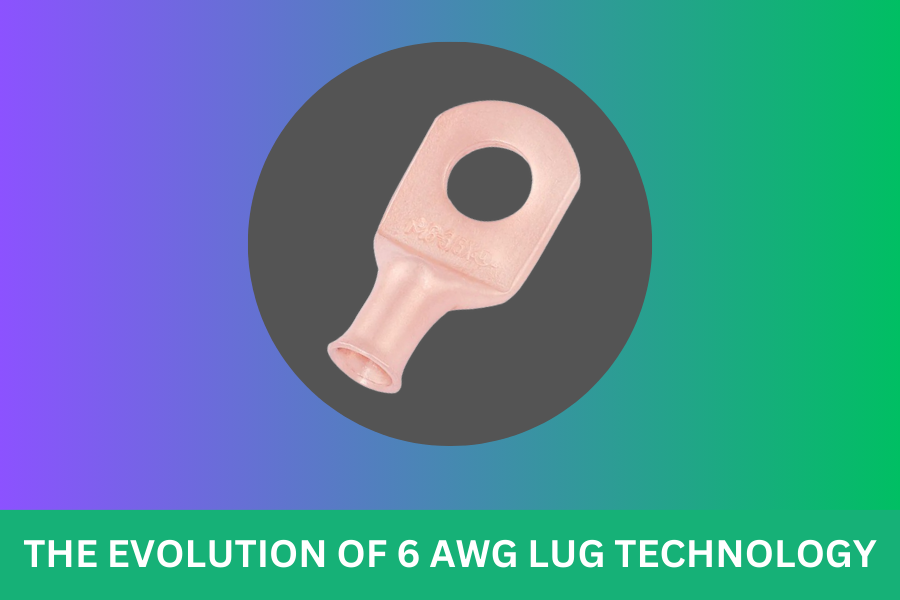The humble terminal lug. An often-overlooked connector plays a crucial role in enabling power distribution. And stable connections within our increasingly sophisticated electrical systems. These lugs connect wires to various components. Allowing electricity to flow from batteries to starter motors. From power distribution panels to household appliances. and across a multitude of industrial and electronic devices.
While terminal lugs may seem like simple passive devices, they have undergone a quiet evolution. Driven by advancements in engineering, material sciences, and a growing demand. for greater efficiency and reliability. In this blog, we’ll take a journey through the transformative developments in 6 AWG lug technology. Exploring how these connectors have been optimized for changing requirements and challenging environments.
Early Designs: The Origins of a Simple Solution
The earliest electrical connections were crude. often relying on twisting wires directly around screw posts or soldering them together. These connections were prone to corrosion, and failure under vibration. or heat buildup due to increased resistance from loose or degraded connections.
The first rudimentary terminal lugs were forged from conductive metals like copper. offering a standardized interface for connecting wires to posts. These early designs solved basic connectivity problems, material limitations, and basic manufacturing processes. and a lack of environmental considerations made them susceptible to oxidation. fatigue, and ultimately compromised connections.
The Rise of Crimping: A Durable Bond
One of the most significant breakthroughs in terminal lug technology. was the development of crimping technology. While soldering can create a strong mechanical bond between a wire and the lug, it has disadvantages. The heating process can compromise the temper of the wire. making it brittle or overly flexible, and requires a higher skill level and precision to achieve a consistent result. Crimping, on the other hand, utilizes mechanical force to permanently deform the lug around the wire. creating a gas-tight connection with high mechanical strength and superior conductivity.
Specialized crimping tools were developed to match the precise shape and material of terminal lugs. enabling technicians to achieve reliable results without needing extensive soldering skills. As demand for durable electrical connections surged in industries like automotive and aerospace. crimping became the favored method. ensuring long-term performance and reliability under even the harshest conditions.
Material Innovation: Beyond Copper and Lead
The traditional material for lugs, lead, is inexpensive and easy to work with. suffers from poor conductivity compared to copper, as well as a higher propensity for corrosion. Copper, a far better conductor, emerged as a preferred choice when performance was paramount. However, copper alone is susceptible to oxidation, demanding protective solutions for long-term durability.
Advancements in material science and plating technologies led to new coatings. and alloys that revolutionized terminal lugs:
- Tin-Plated Copper: Tin plating over copper provides excellent resistance to corrosion. and harsh chemicals, particularly in marine or chemically treated environments. Tin also has good conductivity, ensuring a high-performance connection.
- Aluminum Alloys: Aluminum is an attractive option due to its lightweight properties. and affordability. While early applications experienced challenges with creep and oxidation. the development of specialized aluminum alloys designed for electrical applications offered improved resistance. enabling the use of aluminum lugs within industrial power systems and outdoor applications.
- Specialty Materials: In extreme environments, materials like nickel-plated copper. or even stainless steel terminal lugs offer superior resilience and corrosion resistance. ensuring reliable performance in applications like aerospace, military, and industrial settings. where exposure to extreme temperatures and corrosive substances is prevalent.
Modern Designs: Efficiency in Every Detail
Contemporary 6 AWG wire lugs demonstrate a pursuit of efficiency and reliability. through thoughtful design refinements:
- Serrated Barrels: Many modern lugs feature serrations along the interior of the barrel where the wire is inserted. These serrations bite into the wire during crimping, enhancing the mechanical grip of the lug and reducing the risk of pull-out.
- Inspection Windows: Some lugs incorporate a small window into the barrel. that allows the installer to visually confirm that the wire has been inserted to the correct depth before crimping.
- Flared Barrel Entry: A flared, funnel-shaped opening on the barrel makes inserting stranded wires easier. and ensures all strands are captured during the crimping process.
- Heat Shrink Technology: The combination of terminal lugs with pre-installed adhesive-lined heat shrink tubing provides a one-stop solution. for crimping and creating an environmentally sealed connection. Ensuring long-term protection against moisture and corrosion.
Looking to the Future
The evolution of 6 AWG lug technology is far from over. Driven by ever-evolving applications, ongoing innovation in materials and manufacturing methods. and the relentless push for higher reliability, we can expect further advancements:
- Increased Conductivity: Research into new alloys and surface treatments could lead to lugs with exceptional conductivity. for even greater electrical efficiency.
- Enhanced Durability: Advancements in protective coatings could offer superior resistance to corrosion. As well as chemicals, abrasion, and extreme temperatures.
- Smart Lugs: Incorporating sensors or RFID tags into terminal lugs could allow for real-time monitoring of connection health. temperature, and other parameters, enhancing preventative maintenance practices.
Conclusion
Though seemingly simple, 6 AWG wire lugs have undergone a remarkable transformation. From their humble beginnings as basic connectors to the highly specialized. precisely engineered components of today, they continue to evolve. These advancements guarantee dependable, safe, and efficient connections. keeping the gears of our modern world turning.




